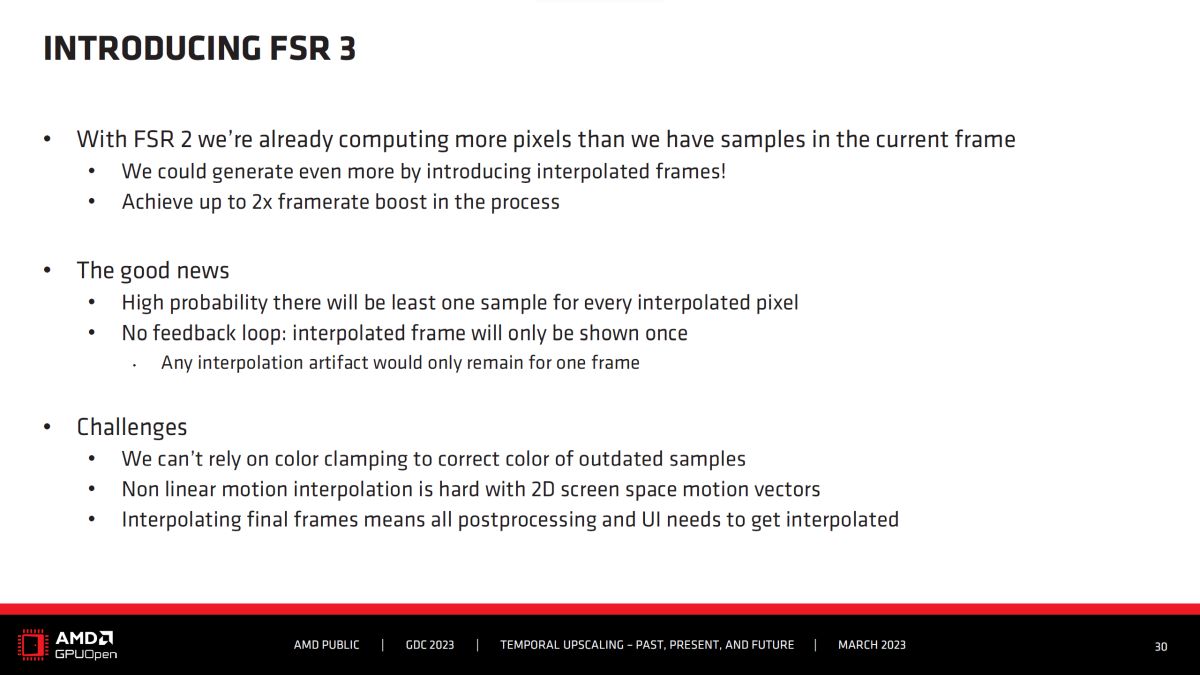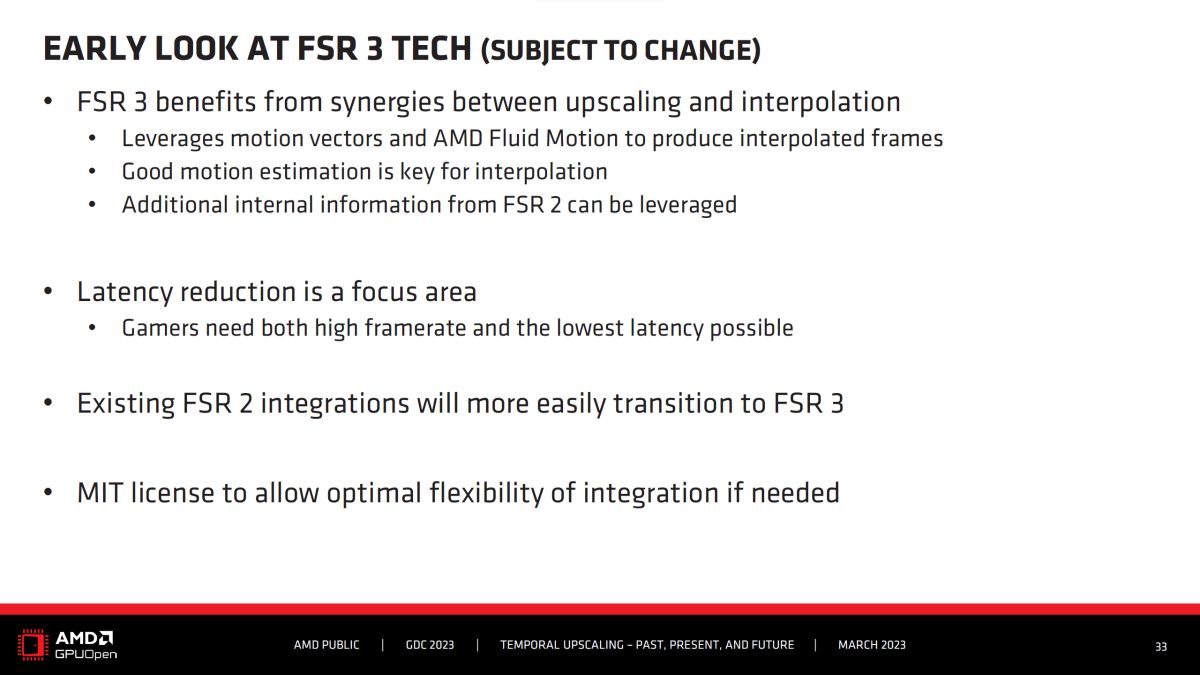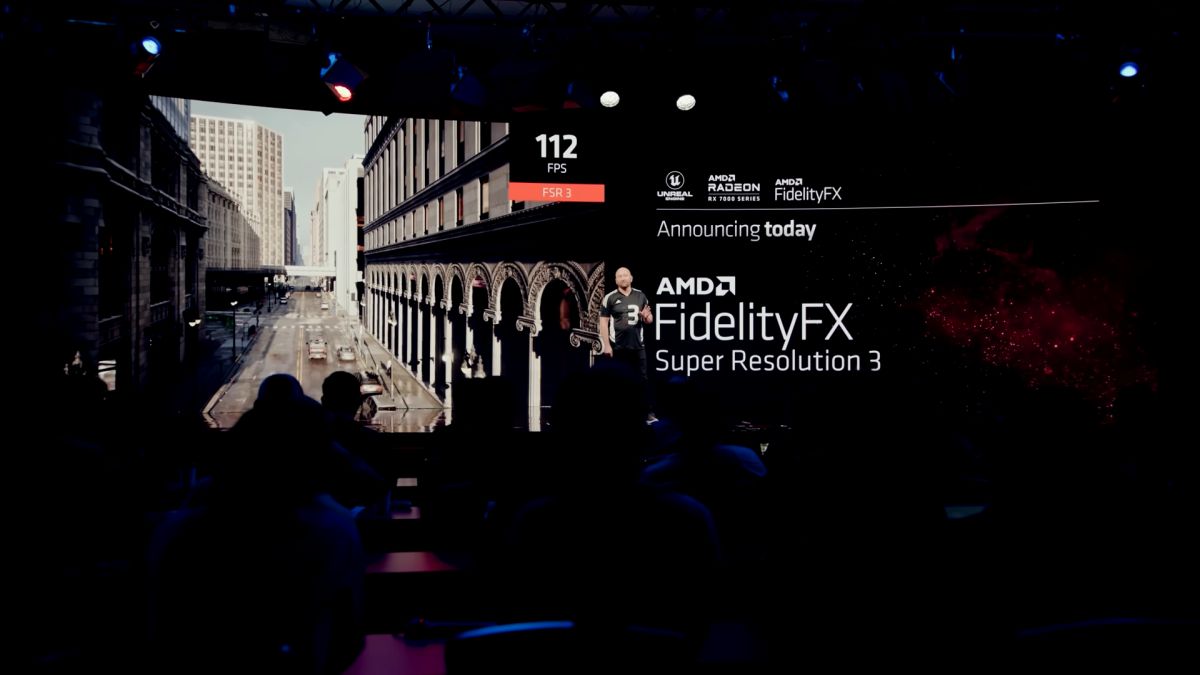Last week, while GDC 2023 went into full swing, AMD’s software engineering team hosted a technical presentation for the next step of its FidelityFX SDK and more specifically, FidelityFX Super Resolution (FSR) 3.0. To state the obvious, the AI upscaling technology will be the successor to the current iteration of the technology, FSR 2.0, but more importantly, its parent company is expecting the technology to take NVIDIA’s own DLSS 3.0 upscaling technology.
As a quick primer, AMD’s FSR technology is software-based and not strictly reliant on exclusive hardware, unlike NVIDIA’s DLSS technology, which requires specialised hardware and GPU in order to run, such as its GeForce RTX Series graphics cards. More importantly, every iteration of AMD’s upscaling technology has been open-source, meaning that virtually any discrete graphics can utilise the feature and benefit from the framerate boost warranted by it, and FSR 3.0 is no exception to the rule.

As to what developers and gamers can expect from FSR 3.0, its software developers said that the feature could effectively double the framerate boost already warranted by FSR 2.0. Accordingly, this is achieved by combining resolution upscaling with frame interpolation. Having said that, it appears that there are still some hurdles that AMD needs to overcome.
For a start, it is still working on reducing the amount of latency generated by FSR as a whole, and not just FSR 3.0. A quick and perfect example of this can be seen with NVIDIA’s current DLSS 3.0: the current version of the upscaler harnesses a new technology known as Optical Flow Accelerator and Frame Generation, whereby the Tensor cores and RT cores within an RTX 40 Series GPU – the tech only works with Ada Lovelace cards – generates entirely new frames instead of pixels. This method does, however, generate a massive amount of latency, so as an offset to the issue, NVIDIA’s Reflex technology is automatically enabled whenever DLSS 3.0 is active.


Based on the detail of one of its slides, it does seem that AMD is suffering from similar issues with FSR 3.0, and how it plans to overcome the issue is still up in the wind for now. Again, as mentioned earlier, the update will be open source and made available through an MIT license, so game developers and makers should be able to use and edit it, to the point that AMD should soon be able to release application samples and full documentation of its technology. At that point, too, games could then begin implementing the upscaling technology into their games as well.
(Source: AMD, Videocardz)
Follow us on Instagram, Facebook, Twitter or Telegram for more updates and breaking news.


